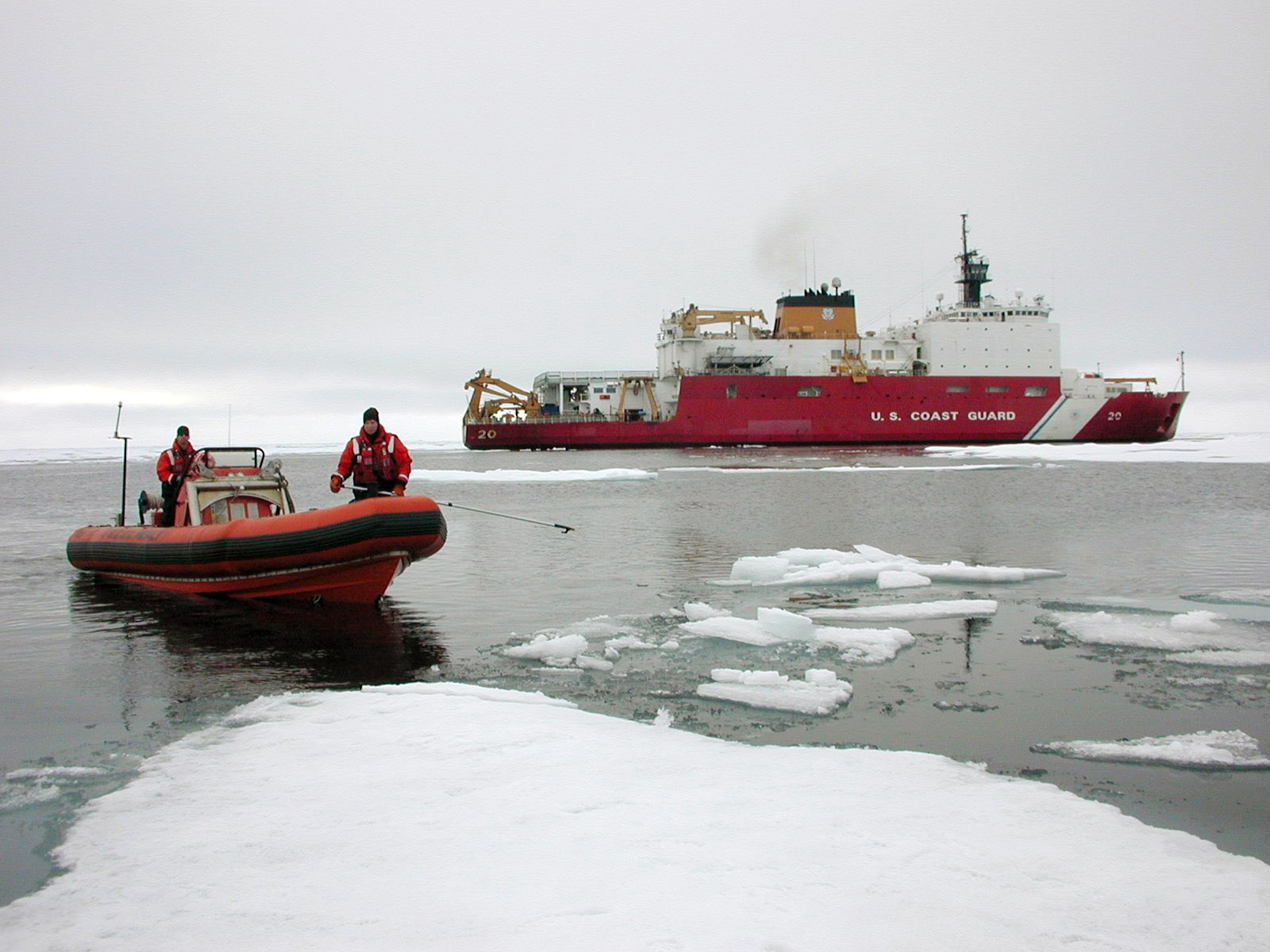
Applied Research Topic:
Use of ICESat-2 data as a Validation Source for the U.S. Navy's Ice Forecasting
ATLAS Product(s) Used: ATL07 and ATL10
Potential Applications:
Navigation; Arctic shipping
Abstract:
The U.S. Navy has been producing forecasts of the ice conditions in the Northern Hemisphere since the early 1980’s. Currently, the Navy has two operational systems predicting the changing ice environment: 1) the Global Ocean Forecast System (GOFS 3.1– https://www7320.nrlssc.navy.mil/GLBhycomcice1-12/POLAR.html), which produces forecasts for both the northern and southern hemisphere, and 2) Navy Earth System Prediction Capability (ESPC) v1.0 which produces a weekly 45-day ensemble forecast with 16 ensemble members. The ESPC Deterministic (ESPC-D) modeling system will become operational in 2024. It consists of the CICE6 model coupled to an ocean model (with tides), atmospheric model and the WAVEWATCH III wave model. The horizontal resolution of the ice and ocean models is 1.75 km at the Pole. Daily forecasts out to 16 days will be made. These modeling systems assimilate atmospheric and ocean observations including sea ice concentration. The next version of ESPC-D will assimilate CryoSat-2 along-track ice thickness data. We are using ICESat-2 products for model validation.
SDT Member Partner:
Co-Investigator(s):
- Li Li, NRL
- David A. Hebert, NRL
- Joseph Metzger, NRL
- Gleb Panteleev, NRL
End Users:
- S. Navy, POC: Kelly Wood, Fleet Numerical Meteorology Oceanography Center
- S. National Ice Center, POC: Angela Ottoson, Assistant Operations Officer (AOPS)
References:
- Sandven, S., Spreen, G., Heygster, G., Girard-Ardhuin, F., Farrell, S. L., Dierking, W., Allard, R. Sea Ice Remote Sensing—Recent Developments in Methods and Climate Data Sets. Surv Geophys. https://doi.org/10.1007/s10712-023-09781-0 (2023).
- Panteleev, G., Yaremchuk, M., Stroh, J. N., Francis, O. P., and Allard, R.: Parameter optimization in sea ice models with elastic–viscoplastic rheology, The Cryosphere, 14, 4427–4451, https://doi.org/10.5194/tc-14-4427-2020 (2020).
- Hunke, E., Allard, R., Blain, P. et al. Should Sea-Ice Modeling Tools Designed for Climate Research Be Used for Short-Term Forecasting?. Curr Clim Change Rep 6, 121–136. https://doi.org/10.1007/s40641-020-00162-y (2020).
- Allard, R., Metzger, E.J, Barton, N., Li., L. Kurtz, N., Phelps, M., Franklin, D., Smedstad, O.M., Crout, J., Posey, P.. Analyzing the impact of CryoSat-2 ice thickness initialization on seasonal Arctic Sea Ice prediction. Annals of Glaciology 61(82), 78–85. https://doi.org/10.1017/aog.2020.15 (2020).
- Stroh, J. N, Panteleev, G., Yaremchuk, M., Francis, O., and Allard, R.: Toward optimization of rheology in sea ice models through data assimilation, Atm. Oceanic Tech., 36, 2365–2382, https://doi.org/10.1175/JTECH-D-18-0239.1 (2019).
- Smith G.C., Allard R., Babin M., Bertino L., Chevallier M., Corlett G., Crout J., Davidson F., Delille B., Gille S.T., Hebert D., Hyder P., Intrieri J., Lagunas J., Larnicol G., Kaminski T., Kater B., Kauker F., Marec C., Mazloff M, Metzger EJ, Mordy C, O’Carroll A, Olsen SM, Phelps M, Posey P, Prandi P, Rehm E, Reid P, Rigor I., Sandven S., Shupe M., Swart S., Smedstad O.M., Solomon A., Storto A., Thibaut P., Toole J., Wood K., Xie J., Yang Q .and the WWRP PPP Steering Group. Polar Ocean Observations: A Critical Gap in the Observing System and Its Effect on Environmental Predictions From Hours to a Season. Mar. Sci. 6:429.doi: 10.3389/fmars.2019.00429 (2019).
- Rogers, W.E., Posey, P., Li, L. and Allard, R. Forecasting and Hindcasting Waves in and Near the Marginal Ice Zone: Wave Modeling and the ONR “Sea State” Field Experiment. NRL/MT/7320—18-9786, 183 pp. (2018).
- Allard, R. A., Farrell, S. L., Hebert, D. A., Johnston, W. F., Li, L., Kurtz, N. T., Phelps, M. W., Posey, P. G., Tilling, R., Ridout, A., and Wallcraft, A. J.: Utilizing CryoSat-2 sea ice thickness to initialize a coupled ice-ocean modeling system, Advances in Space Research, doi:10.1016/j.asr.2017.12.030, (2018).
- Williams, J., B. Tremblay, R. Newton, R. Allard. Dynamic Preconditioning of the Minimum September Sea-Ice Extent. Climate (2016).
- Hebert, D. A., R. A. Allard, E. J. Metzger, P. G. Posey, R. H. Preller, A. J. Wallcraft, M. W. Phelps, O.M. Smedstad. Short-term Sea Ice Forecasting: An Assessment of Ice Concentration and Ice Drift Forecasts using the U. S. Navy’s Arctic Cap Nowcast/Forecast System. J. Geophys. Res., doi:10.1002/2015JC011283 (2015).
- Posey, P. G., Metzger, E. J., Wallcraft, A. J., Hebert, D. A., Allard, R. A., Smedstad, O. M., Phelps, M. W., Fetterer, F., Stewart, J. S., Meier, W. N., Helfrich, S. R.. Assimilating high horizontal resolution sea ice concentration data into the US Navy's ice forecast systems: Arctic Cap Nowcast/Forecast System (ACNFS) and the Global Ocean Forecast System (GOFS 3.1), Cryosphere, 9, 2339-2365, doi:10.5194/tcd-9-2339-2015 (2015).
- Cummings, J.A.,2013:"Variational data assimilation for the global ocean." Pp. 303-343 in Data Assimilation for Atmospheric, Oceanic and Hydrologic Applications (Vol. II), S.K. Park and L. Xu, Eds, Springer-Verlag, Berlin Heidelberg, doi:10.1007/978-3-642-35088-7_13.
- Hunke, E.C. and W. Lipscomb, 2008: "CICE: The Los Alamos sea ice model, documentation and software user's manual, version 4.0". Tech Rep. LA-CC-06-012, Los Alamos National Laboratory, Los Alamos, NM.
- Metzger, E.J., H.E. Hurlburt, A.J. Wallcraft, J.F. Shriver, L.F. Smedstad, O.M. Smedstad, P. Thoppil and D.S. Franklin, 2010: "Validation test report for the global ocean prediction system v3.0 — 1/2 HYCOM/NCODA" Phase 2. Naval Report NRL/MR/7320—10-9236, Stennis Space Center, MS.
- Posey, P.G., E.J. Metzger, A.J. Wallcraft, R. H. Preller, O.M. Smedstad, M. W. Phelps, 2010: "Validation of the 1/12º Arctic Cap Nowcast/Forecast System (ACNFS)", Naval Report NRL/MR/7320—10-9287, Stennis Space Center, MS.


